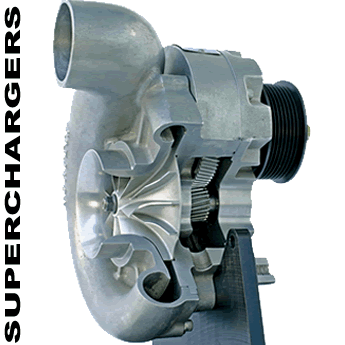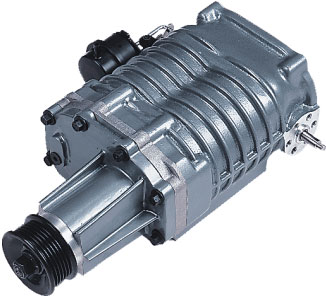Corvette Supercharged Facts and Info!
Corvette Supercharged is what this fun section will be about and hopefully to read about. First off I have to let you know its your decision what type of supercharger or turbocharger you put on your car. I just want to talk about the different systems to help with that decision.
We will start off with what we would like to install first on our project car. Since we already have a supercharger on the Corvette-web-central project car we have first hand experience. We built the system ourselves and used a name brand blower head unit and parts. If we had to do over we would (drum roll please)!!!! The Corvette Supercharged system from Eaton on the LS9! Yes if I had the option to do over I'd use the supercharger system from the LS9 Motor. I don't think GM has offered this option as of yet though. So why then you ask? Let me explain. Its the benchmark for simplicity, efficiency, reliability, and power!
This is a great video of the LS9 Corvette Supercharged Assembly!
The Corvette ZR1 LS9 Supercharged system features four lobes instead of the usual three for higher power and efficiency. It also features an intercooler to cool down the air/fuel charge for more power. The four lobes is key to its improved efficiency. This design takes everything great about a turbo system and everything great about a belt driven supercharger system and combines them. Turbos are great because they recover part of the wasted energy from the exhaust gases and can provide higher boost levels. The con is higher heat under the hood and into the engine, less space, more complexity, and the risk of a fire is greater from high heat and oil feed lines!
A little Tech for you, an average of 15-20 hp per pound of boost is a good horse power gain. For example 10psi of boost x 20hp per psi of boost=200HP. This equation is all you need to know to figure out how efficient a system really is. So what do they mean by boost? A standard day at sea level is 14.7 psi or 29.92 inches of mercury (inHg) at 59 degrees F. The key words there are "standard day". That's not real life! Real life means pressure variations can come from your elevation or if there is a low or high pressure weather system in you area. So if you are at 18000 ft for example the actual pressure drop would take you down to 7.3 psi and it would take you over 7 psi of boost to get back to a normal condition! In aviation they would call that a normalizer and the engine would hold its power rating up to a certain altitude. Know you can see why drag racers and anybody living in higher altitudes are always concerned about getting the tunes right.
The Pros for the belt driven Corvette Supercharged systems are compact size relative simplicity and better heat control. Depending on type of belt driven supercharger. A positive displacement type blower over a centrifugal. A positive displacement type will generally sit on top of the engine and require a hood change to fit the intercooler under the blower.
Centrifugal Systems
Centrifugal systems and Turbo Chargers can control the boost level based on RPM's via throttle control. So the higher the RPM the more boost which equal's more HP.
Examples of Centrifugal Systems:
ATI Procharger
Vortech
Paxton Novi
Centrifugal Kits
ProCharger

Examples of Turbo Chargers:
APS
STS (Rear Mount Turbo)
Lingenfelter Twin turbo
HP Performance

Positive Displacement
A positive displacement type blower has boost instantly or at a much lower RPM. This can make traction a problem so have your sticky tires on.
Examples of positive displacement type:
Magnuson superchargers
Kenne Bell

What to Expect as a Minimum
* More then $5000 of your hard earned cash.
* Down time with your car. Depending on where you take it could be weeks to months so plan accordingly.
* Fuel system upgrades, bigger injectors, and possibly a fuel pump.
* Dyno tuning would be my preferred minimum.
* So yes will also need to modify your ECU. As a note make sure you get your original factory tune back in case you go back to stock.
Things to Consider:
* Upgrading the transmission, and rear end output shaft especially if you upgrade the tires.
* Upgrading heads, intake, exhaust, short block to a forged unit.
* Wider wheels and tires which can lead you to a wider body fender kit.
I could go on, but I think you see how it snowballs, but trust me its fun. You will be part of an elite club of car owners that will really fear few things on the streets. There is nothing like the sound of a blower to give you chills down your spine and a heavy right foot!
As always see the Tags below to find more info on Corvette Supercharged systems and many others! Return Home from the Corvette Supercharged section
 Chris Trautman @ Corvette Assembly Plant 2019
Chris Trautman @ Corvette Assembly Plant 2019About Us: Corvette Web Central | Owner Bio: Chris Trautman
Established in 2008 by Chris Trautman, Corvette Web Central quickly grew into one of the top leading Corvette enthusiast websites globally.
"This website is a passion of mine, just as much as being a Corvette owner," says Chris. He was frustrated trying to find information on the internet about Corvettes which was was not biased or influenced somehow.
He has owned three Corvettes over the last twenty years and does not plan to stop owning one anytime soon.
Note: Some links on this page are part of our affiliate program and provide a small portion of proceeds to fund the administrative costs and to fund more product reviews. We are not paid to perform the reviews or are we given any products for free.



New! Comments
Have your say about what you just read! Leave me a comment in the box below.